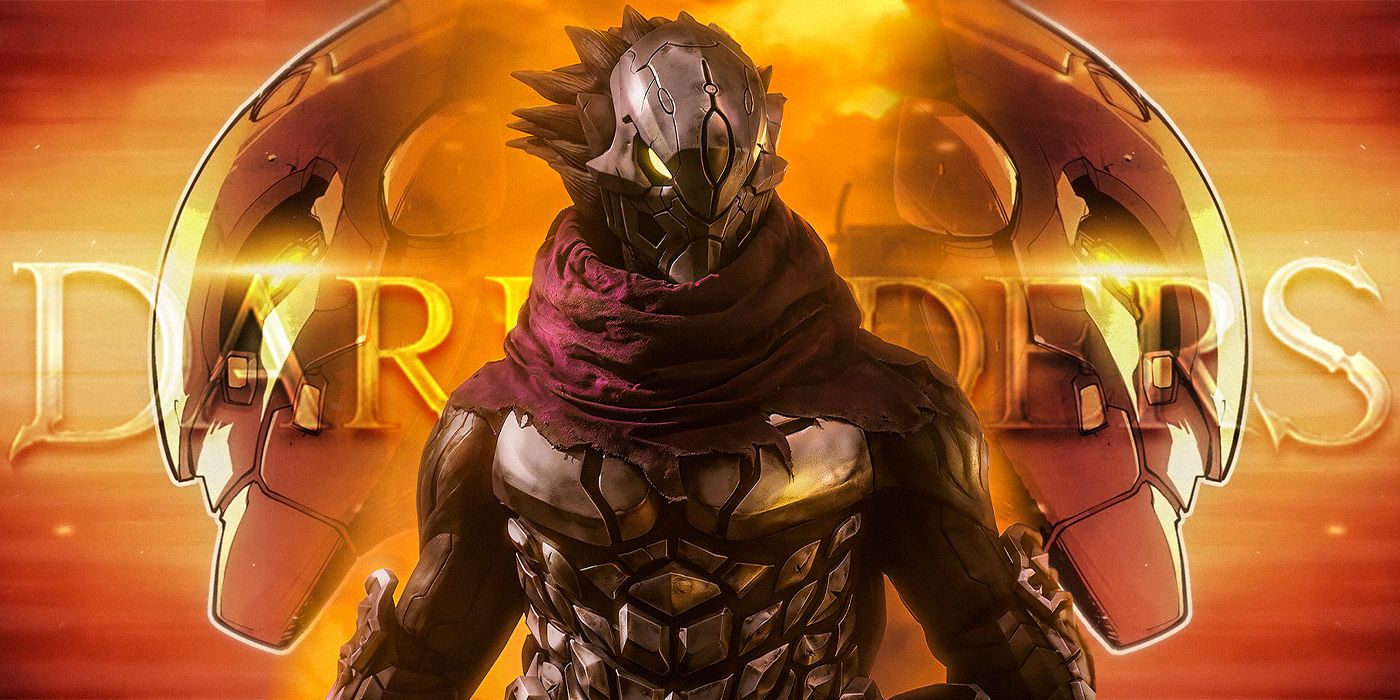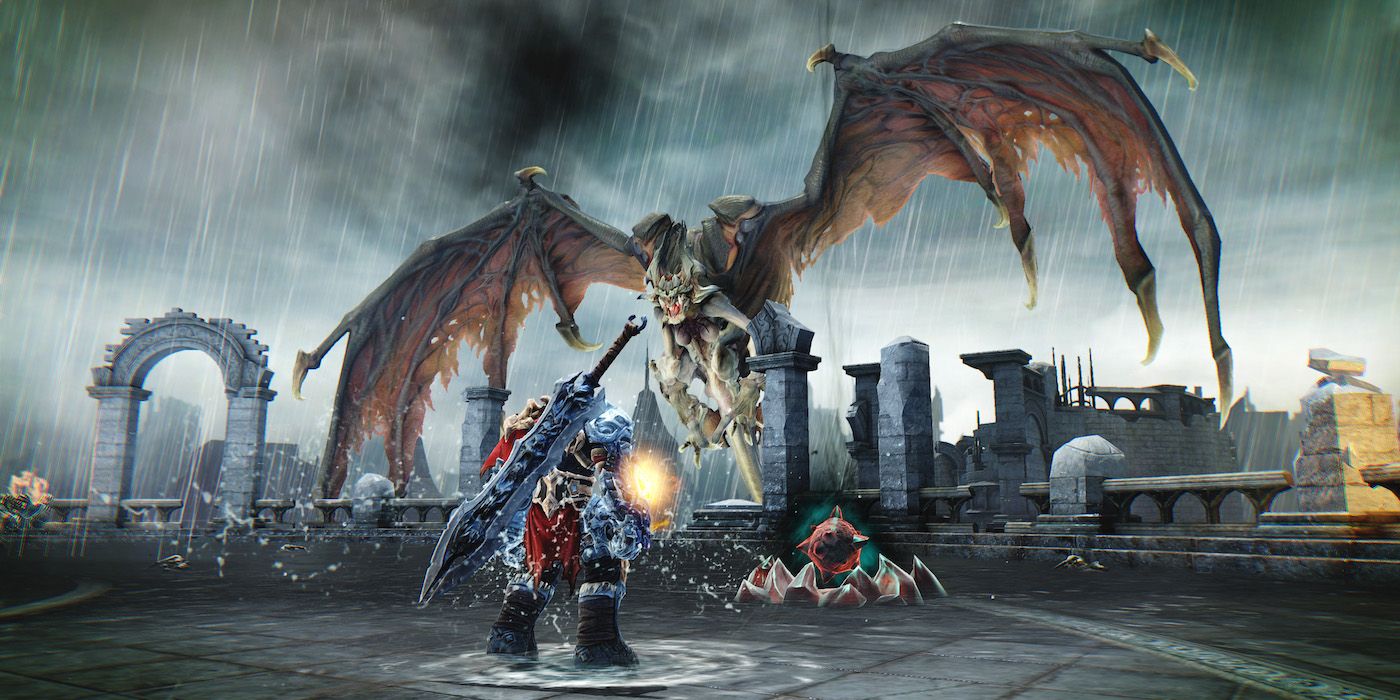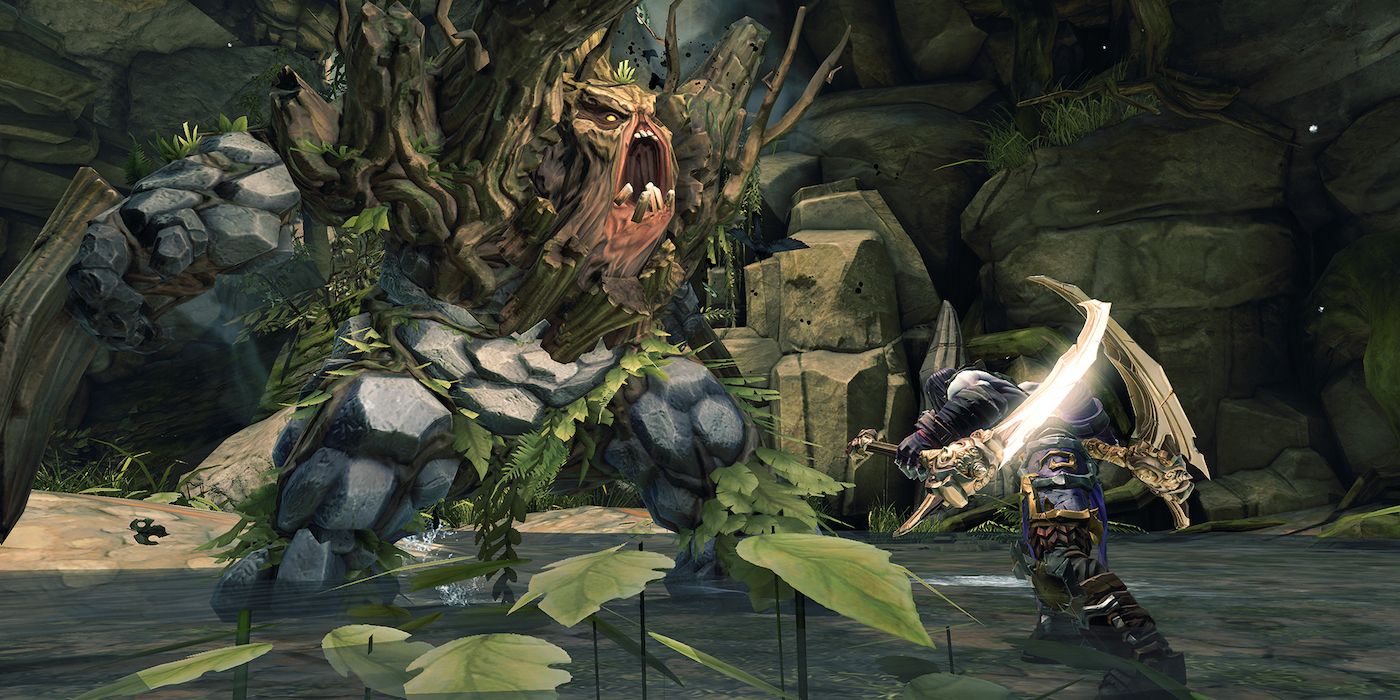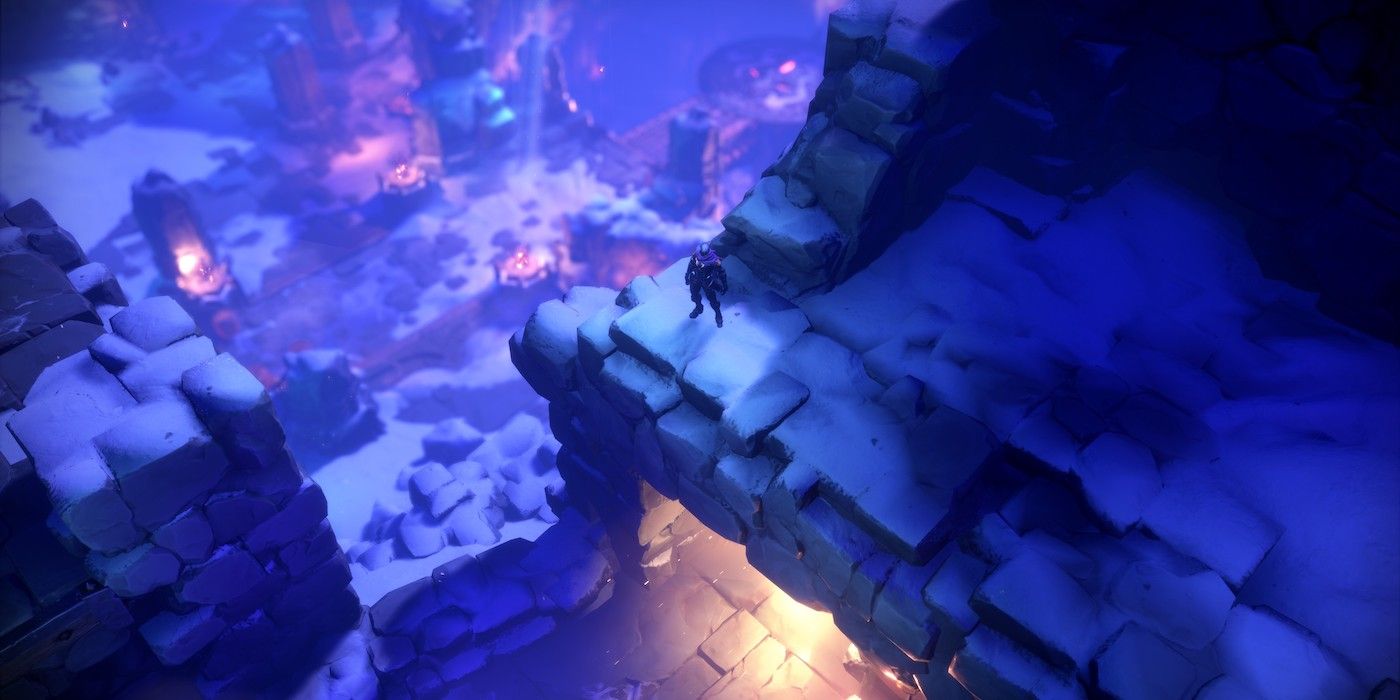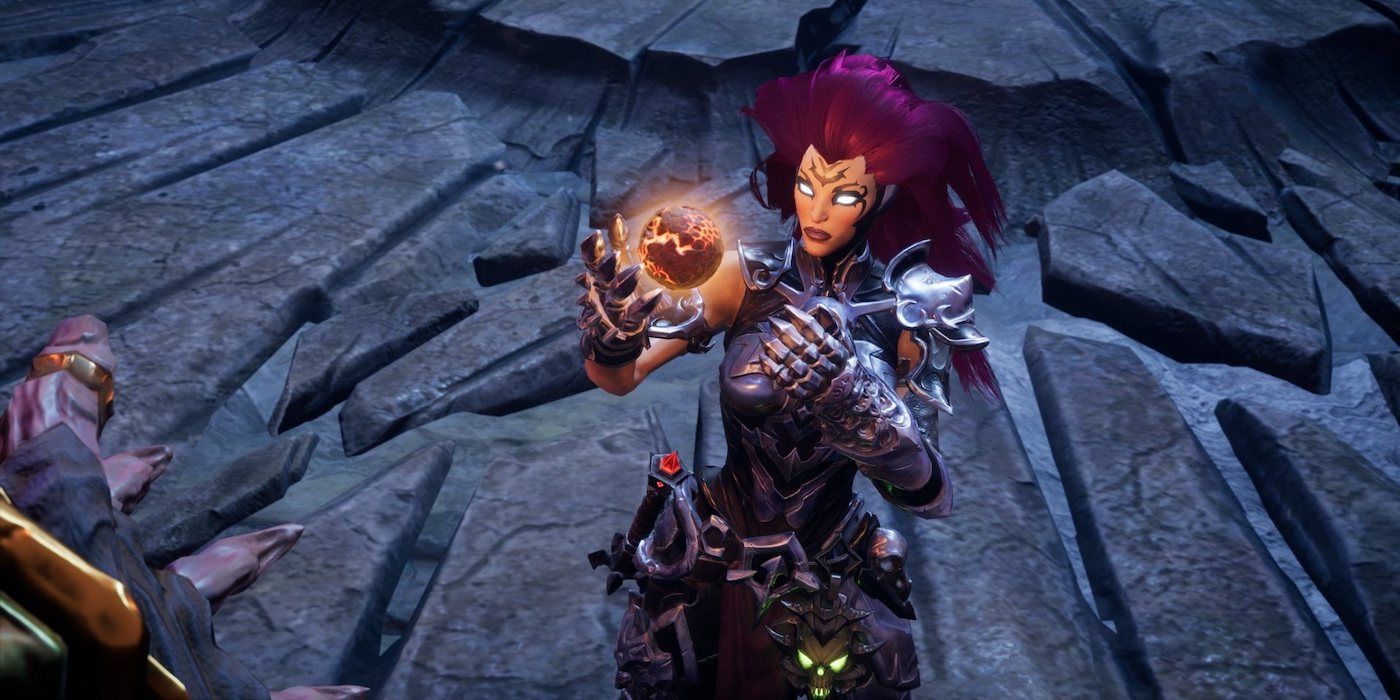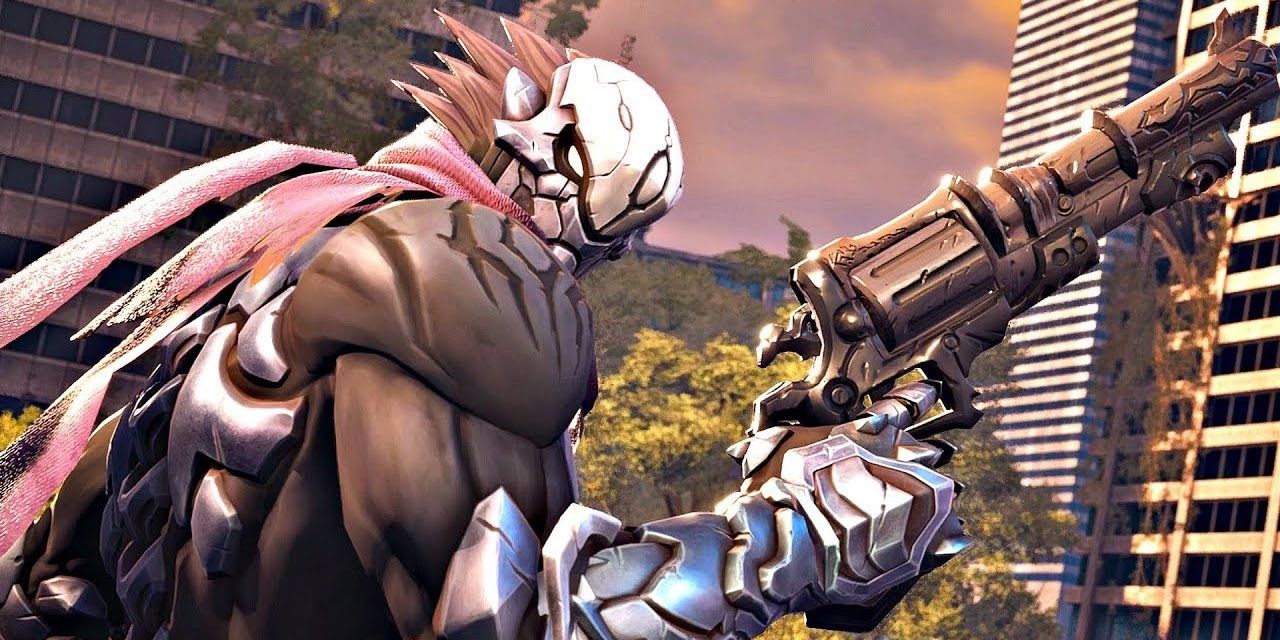Editor's note: The following contains spoilers for Darksiders, Darksiders II, Darksiders III, and Darksiders Genesis.With Darksiders III coming to the Nintendo Switch at the end of September, hope is reborn in our hearts that THQ Nordic will finally announce Darksiders IV, the long-overdue game that would let us take control of Strife in a hack-and-slash full-3D solo adventure. Every other Horseman of the Apocalypse received their solo story. Still, so far, Strife only showed up as a cameo in the main series and is only playable in the top-down spin-off prequel Darksiders Genesis. While fans are eager to jump straight into Armageddon and unite the Four Horsemen against the Charred Council, it would actually be better for the franchise to wait a little longer before delivering its epic conclusion in order to give Strife more time to shine.
While the first Darksiders cliffhanger still weighs over our heads, the franchise grew so much, and in so many directions, that there are a lot of plot knots ready to be untangled by a Strife solo adventure. Besides being suitable for the story, a Strife-focused Darksiders IV would also honor the original plans of the dissolved studio Vigil Games, which created the original two games. Considering how the franchise was almost lost forever after the original studio was shut down back in 2013, it would be great to see the whole picture Vigil Games’ team intended to paint before the series finally comes to an end. To understand these initial plans and how they still can be fulfilled, we need to go through more than a decade of gaming history.
How the Apocalypse Came for ‘Darksiders’
While many games use ancient mythology as a source of inspiration, it’s a lot rarer to find an AAA title that dives deep into Christianity to give players an excuse to beat angels and demons to a pulp. Add frantic combat, a vast world to explore, and a Zelda-like progression where new weapons unlock new levels, and there’s a lot to love in 2010’s Darksiders. To make the deal even sweeter, the first Darksiders end up with one of the biggest cliffhangers in gaming history by showing how the Four Horsemen will stand together against the armies of Heaven, Hell, and the Charred Council. After spending twenty hours wreaking havoc as War, the promise of controlling four badass warriors at the same time is every hack-and-slash player’s dream come true.
Instead of resolving the massive cliffhanger at the end of Darksiders, Darksiders II took a whole different and exciting direction. By letting players control Death, the game allows fans to know a second Horsemen while new details about the overarching lore are revealed. As soon as Darksiders II hit the market, it became clear that Vigil Games was developing an ambitious project that was bigger than any individual game. Each main Darksiders game would focus on one of the Four Horsemen, and only when each main character was introduced would we get to play with all four simultaneously. It’s a brilliant project that demanded a lot of planning and established a fast execution; since Darksiders II came out only two years after the first one, it became reasonable to expect a new game every couple of years. Little did we know that what made Darksiders possible would also bring its doom.
While Darksiders is not without its flaws, the game is just overflowing with style. It couldn’t be any other way, as the franchise was created by Vigil Games, a studio formed by comic artist Joe Madureira and game designer David Adams. Vigil Games was created in 2005, but in 2006 they became a part of THQ, a big publisher ready to throw a lot of money in Darksiders’ direction. While Vigil Games created the original concept of Darksiders, THQ money made it possible to bring the two first games to life. Unfortunately, THQ would file for bankruptcy at the end of 2012, dooming Vigil Games in the process. Vigil Games was dissolved in January 2013, and all the plans for the franchise were turned upside down.
When THQ was dissolved, its many development studios and franchises were sold up to different buyers. As a result, the THQ brand and the Darksiders IP ended up in Nordic Games’ pocket. However, instead of keeping the Darksiders project moving forward, Nordic decided to play safe by first exploring the franchise’s past. So in 2015, three years after its original release, Nordic published the Darksiders II: Deathinitive Edition remaster, developed by Gunfire Games.
While the remaster was not exactly what fans wanted, it was still a piece of good news, as Gunfire Games was formed in 2014 by Adams, who was involved in the Darksiders franchise from the very beginning. The excellent reception of the remaster also convinced Nordic to hire Gunfire Games to develop the next chapter of the franchise. And so Darksiders III came out in 2018, six years after Darksiders II. While not as critically successful as the previous titles, Darksiders III was still a solid entry to the franchise, and able to make its budget back. Nordic then acquired Gunfire Games, meaning Darksiders IV could be coming next. Instead, Gunfire Games became busy with a new IP, Remnant: From the Ashes, and Nordic would move the franchise to another studio, Airship Syndicate, to develop a prequel (Genesis) instead of a sequel.
It’s been a long journey for Darksiders, an IP that kickstarted an ambitious project it never had the chance to fulfill. While the franchise is not dead, especially after Darksiders Genesis exceeded sales expectations, there’s no news regarding Strife’s solo game. Even so, Nordic should honor Vigil Games’ inspiring project and wrap up the franchise as it deserves.
‘Darksiders IV’ Can Tell Strife’s Story
The Darksiders lore revolves around the Apocalypse, the ultimate battle in a millenary war between Heaven, Hell, and Humanity. The Apocalypse is supposed to happen only when the Third Kingdom, Humanity, evolves enough to defend itself. However, forces on Heaven, Hell, and the supposedly-balance-enforcing Charred Council plot against Humanity and release the Apocalypse sooner than expected, killing almost every human in the process.
While the general outline of Darksiders lore is given to the player through War’s adventure in the first game, each subsequent title on the franchise thickens the plot. Darksiders II and III also let us know where Death and Fury are while War is imprisoned by the Charred Council, and why they didn’t help their brother clear his name. Death sacrifices his own life to bring Humanity back and reverse the Apocalypse's most vicious effect. As for Fury, she becomes a guardian to the surviving humans, leaving with them to a dimension outside the Charred Council’s reach. But what about Strife? Clues to the fourth Horseman whereabouts are scattered all over the three titles.
In the opening of Darksiders III, War is already in chains, and Death is declared missing after he left to find the Crowfather (Link to Darksiders 2 Ending Explained). According to the Charred Council, Strife is dealing with some unknown official business, which is why Fury must go by herself after the Seven Deadly Sins. But what is this official mission? Is there even any mission from the Charred Council, or did the entity just wanted to deceive Fury? These are the first questions Darksiders IV could answer.
By the end of Darksiders III (Link to Darksiders 3 Ending Explained), we learn that Strife was disguised as a human all along, hiding with Ulthane and the other Makers in the Haven built to protect Humanity’s survivors. However, we never learn precisely why Strife is disguised, how he got there, and what his ultimate plan could be. Strife’s presence might be related to the supposed mission he got from the Charred Council, and, once again, Darksiders IV would be essential to giving the story the treatment it deserves. During Darksiders III, Strife already knows about the Council’s treason and the attack on Humanity, so we must learn how the Horseman found out the truth.
Lastly, while Fury escapes with the surviving humans at the end of Darksiders III, Strife stays behind to hold the Destroyer and his army of demons. At this point in the timeline, Strife still possesses his two mystical revolvers: Mercy and Redemption. The two revolvers, however, become tools for War and Death in the first two games. Does that mean Strife died during the demonic attack? Is that why his two revolvers were in possession of Makers? After all, Ulthane gifts War with Mercy, while Redemption is with Alya when Death reaches the Forge Lands. That might mean Strife made his final stand in Darksiders III, but Darksiders IV would have the opportunity to clear up the whole affair.
From the previous game, it’s clear that Strife was always supposed to have his own story arc. The Horseman must go on his mission for the Charred Council, find out the truth about their deception, and then ally with Makers to protect Humanity. Finally, we need to learn how Strife lost his revolvers after his death or imprisonment. Jumping these steps in favor of the final crossover between the Four Horsemen would not only be unfair to Strife but also to players who would be deprived of another solo adventure that shakes up the franchise’s core gameplay.
Darksiders was planned, from the beginning, as a story told in five installments: four installments to each of the Horsemen of the Apocalypse and the last game to unite the destructive forces of them all. It was an ambitious project right from the start that unfortunately got dismantled by THQ’s bankruptcy. Still, we've come too far to give up now, and considering that the franchise still has devoted fans worldwide, the project deserves to get a proper conclusion. And that means giving Strife his own journey in Darksiders IV before finally resolving the cliffhanger left by the first game.

